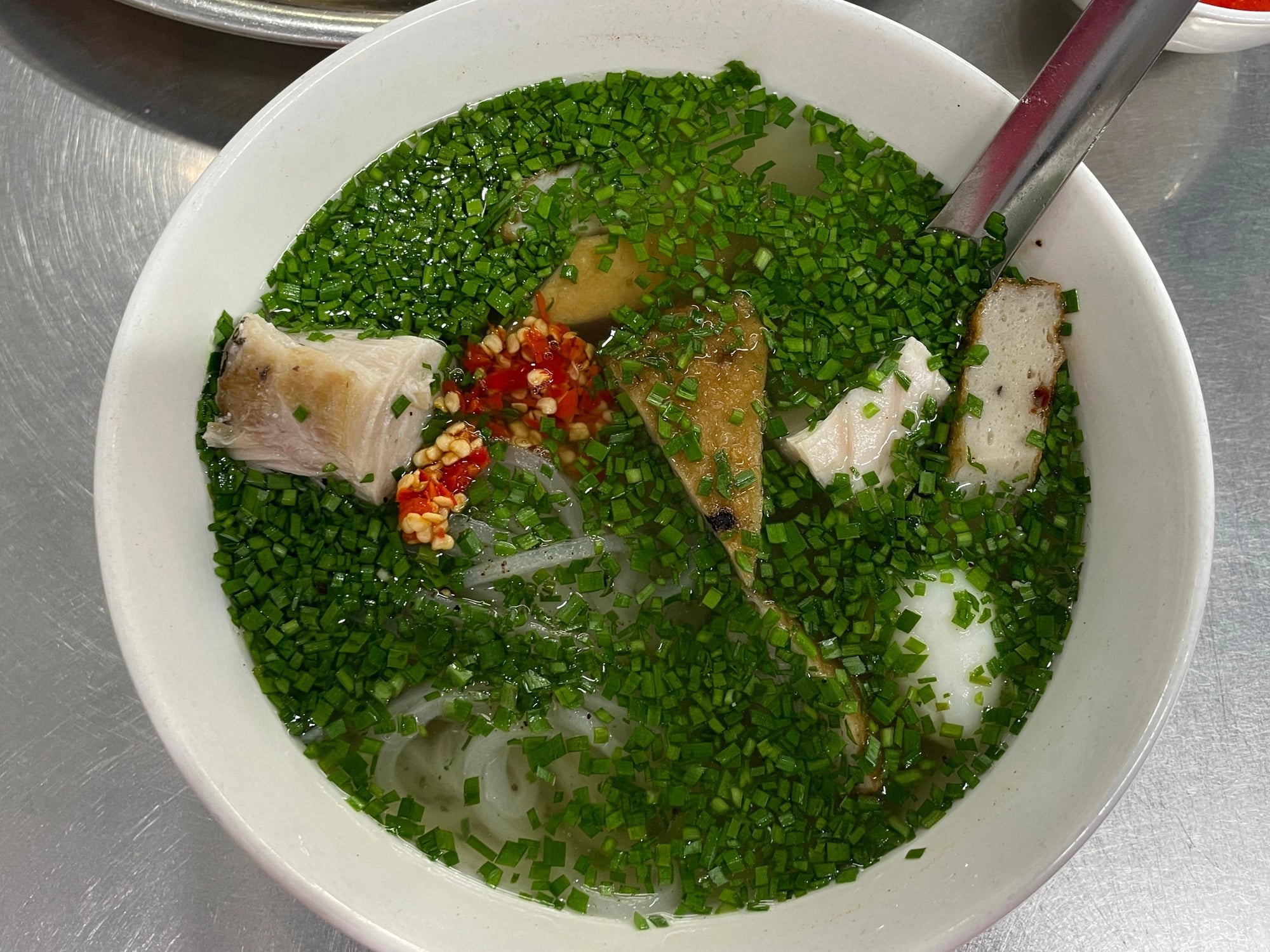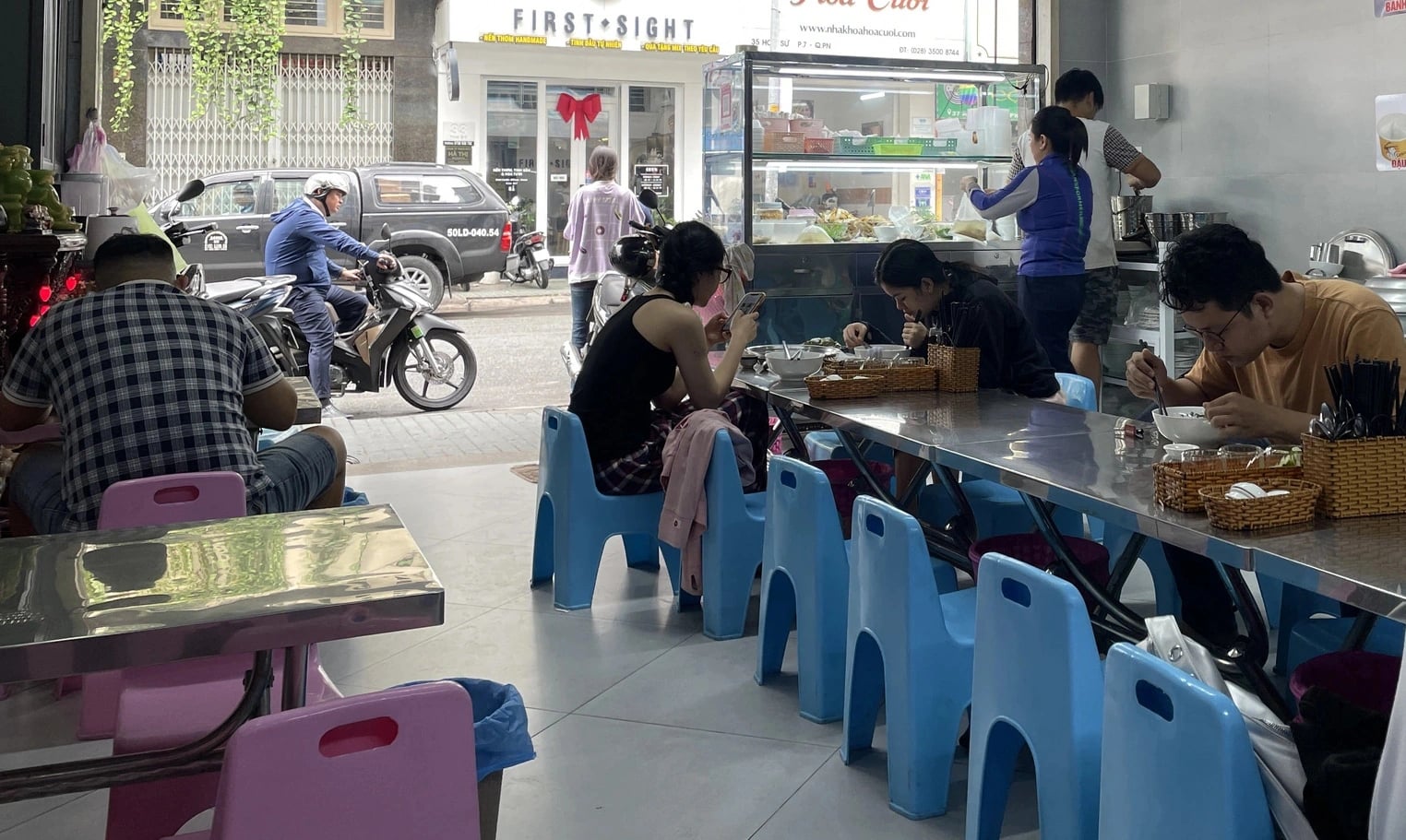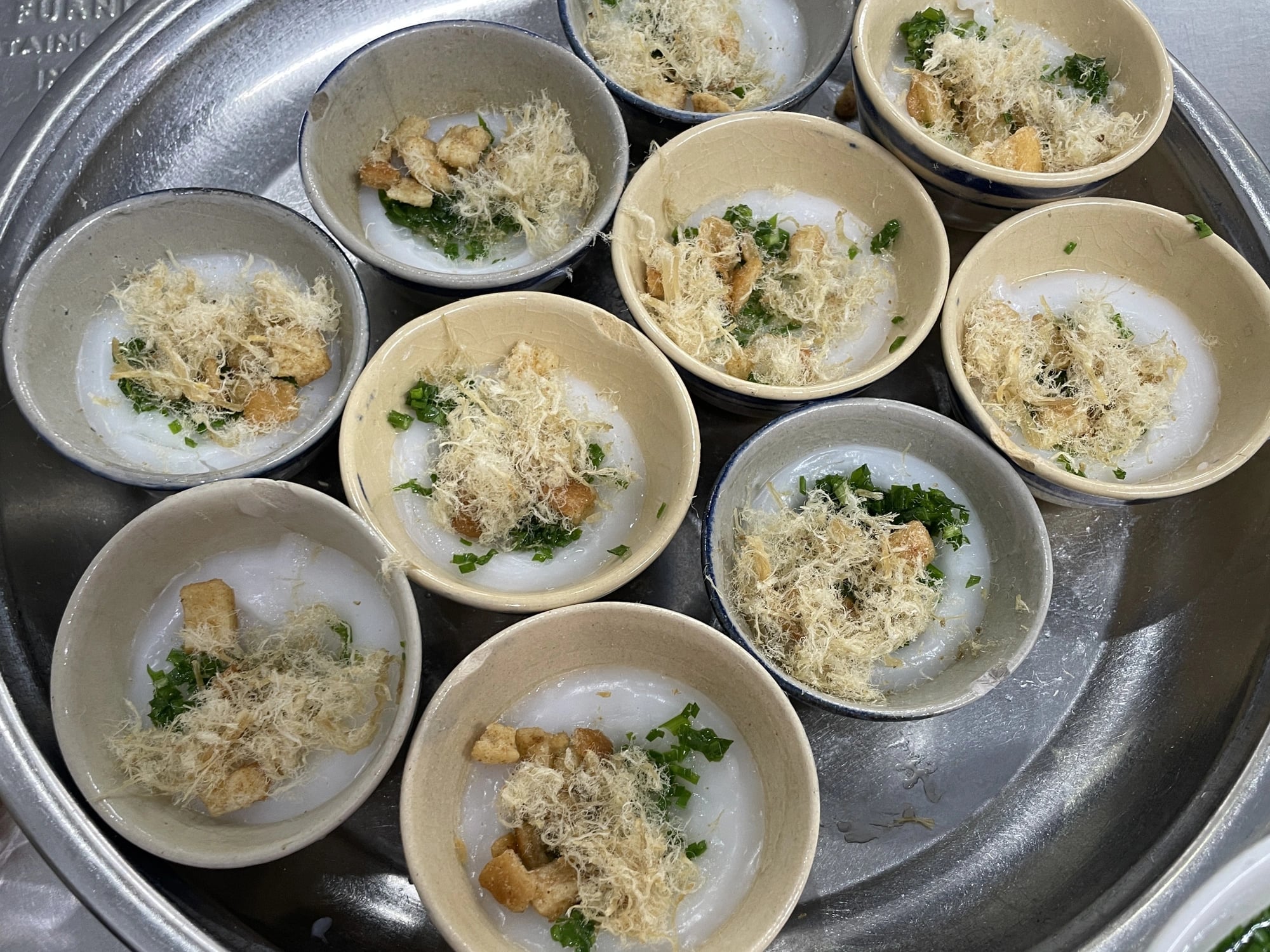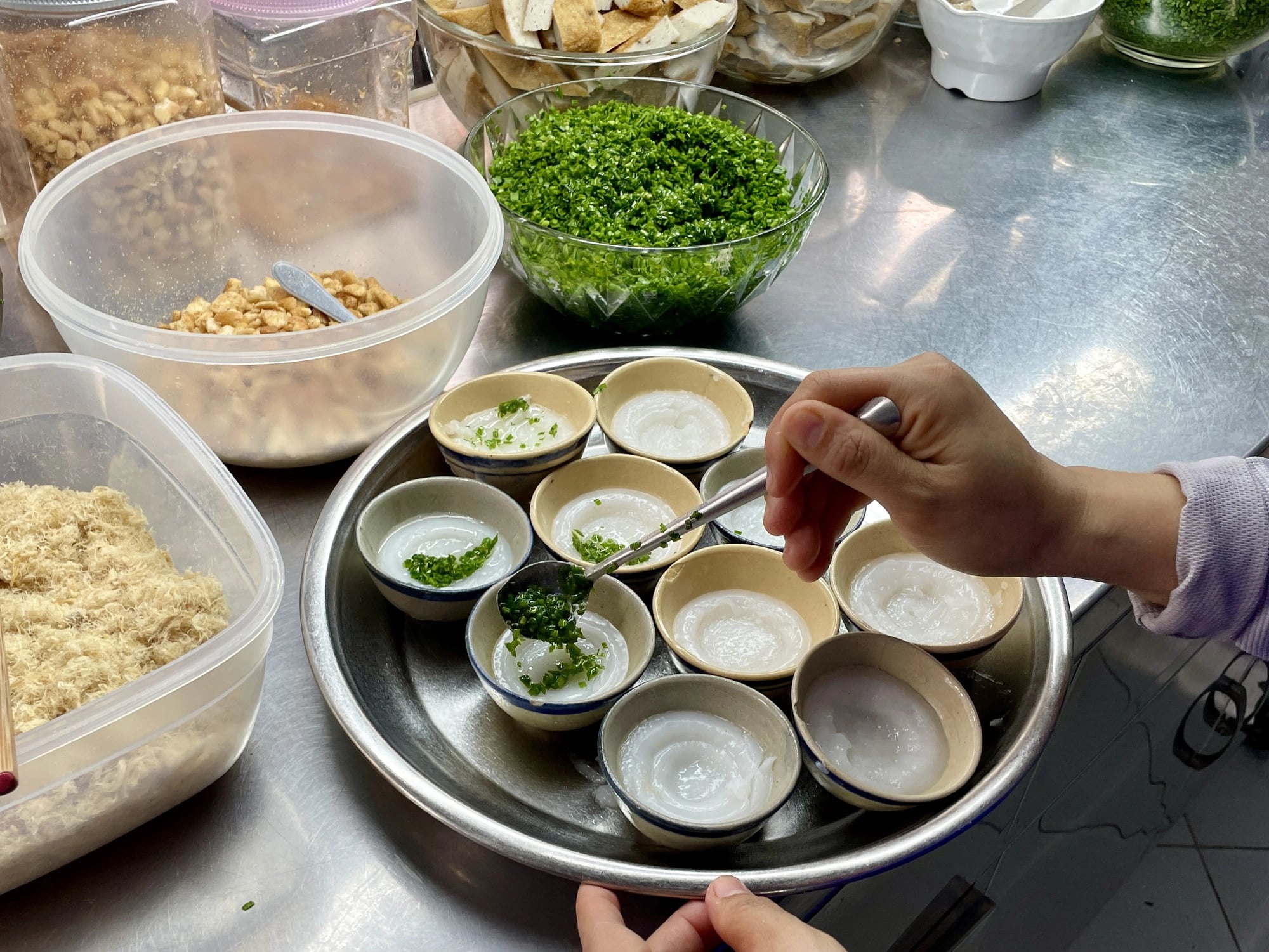Famed for a diverse culinary scene shaped by people from across Vietnam who have moved to the southern metropolis for a host of reasons, Ho Chi Minh City offers a rich variety of regional specialties, yet finding a Phu Yen eatery to satisfy cravings for bánh bèo or bánh canh hẹ is not always easy.
But eateries like Co Mai Phu Yen make it a bit easier.
Nestled on Hoa Su Street, a bustling food haven in Phu Nhuan District, Co Mai Phu Yen operates daily from 7:00 am to 9:00 pm, offering a taste of familiar dishes from the south-central province of Phu Yen, including bánh bèo (steamed rice cake), bánh canh hẹ (noodles topped with chopped garlic chives), and bánh hỏi (rice noodle sheets).
A full bowl of bánh canh hẹ here fetches VND45,000, while a set of ten bánh bèo cups goes for VND40,000. (US$1 = VND25,420)
|
|
| Diners enjoy Phu Yen delicacies at Co Mai Phu Yen in Phu Nhuan District, Ho Chi Minh City. Photo: Lan Huong |
Bánh canh hẹ, a Phu Yen specialty, is made from chewy rice flour noodles.
Each strand is square and dusted with a light coat of rice flour to prevent sticking.
The noodles are served in a clear broth with tasty toppings of fish cake, mackerel, and plenty of chopped garlic chives.
An optional dash of finely ground chili enhances the flavor and removes any fishy smell from the dish.
The heart and soul of bánh canh hẹ lie in its clear broth.
According to Nguyet, a staff member at the eatery, the natural sweetness of the soup comes solely from pork bones and fish which have been simmered for hours.
No MSG or seasoning powder is used, ensuring an authentic taste.
Meanwhile, bánh bèo, a popular dish across central Vietnam, is served in small ceramic cups.
The soft, jiggly rice cakes are topped with shredded pork floss, crispy fried bread cubes, fried shallots, and garlic chive oil, complemented by a vibrant sweet-and-sour fish sauce.
All of the ingredients including the fish cake, mackerel, garlic chives, and shredded pork are shipped directly from Phu Yen, ensuring quality and authenticity, Nguyet shared.
The only topping sourced locally is the fried bread cube, which adds an extra crunch to the bánh bèo.
|
|
| 'Bánh bèo' at Co Mai Phu Yen in Phu Nhuan District, Ho Chi Minh City. Photo: Lan Huong |
The love to mom-cooked bánh bèo
Linh, owner of Co Mai Phu Yen, said that the eatery has been serving customers in Ho Chi Minh City for eight years.
“I miss [my hometown’s food]. I love it so much that I want to share its flavors with everyone here,” Linh explained.
|
|
| 'Bánh bèo' at Co Mai Phu Yen in Phu Nhuan District, Ho Chi Minh City. Photo: Lan Huong / Tuoi Tre |
In addition to Co Mai Phu Yen’s Ho Chi Minh City location, Linh's family also owns an eatery by the same name at the foot of Nhan Mountain in Phu Yen.
Unlike the original location, which specializes in bánh bèo and bánh hỏi, the Ho Chi Minh City branch introduces bánh canh hẹ to the menu.
Working alongside Linh is Nguyet, both a kitchen staff member and a family relative.
The two grew up surrounded by the aroma of their mother and grandmother’s bánh bèo and, over the years, have gradually cultivated a deep love for the dish.
Like us on Facebook or follow us on Twitter to get the latest news about Vietnam!




















































